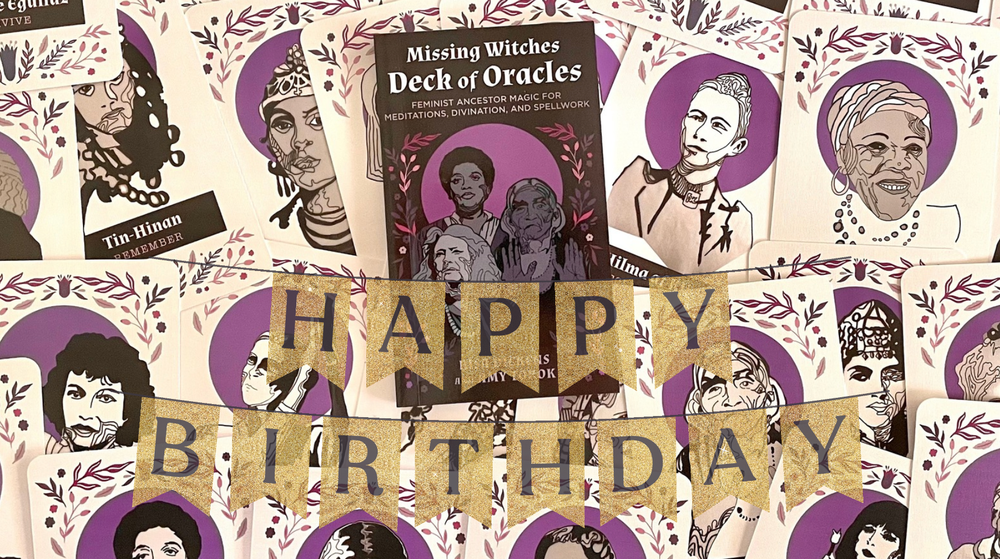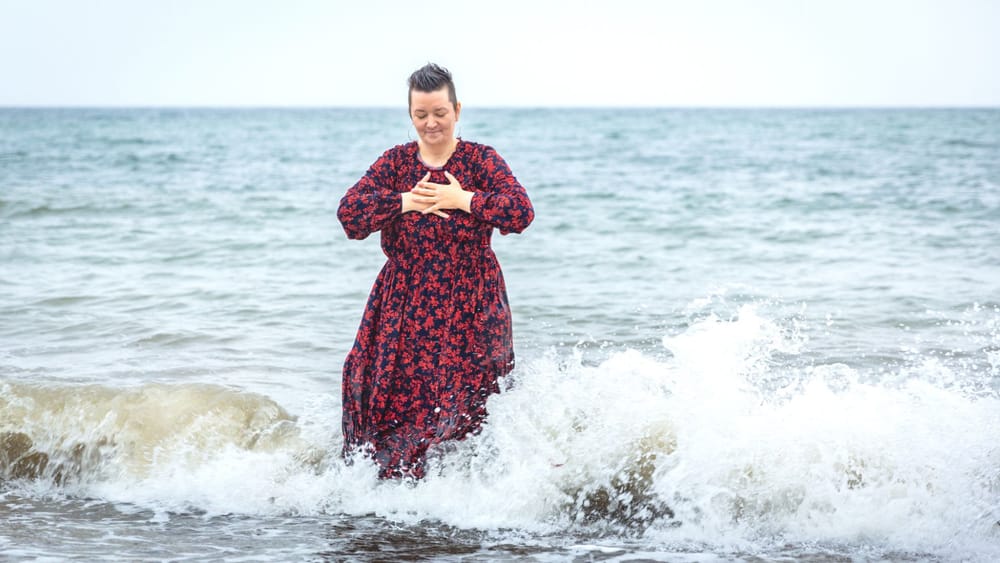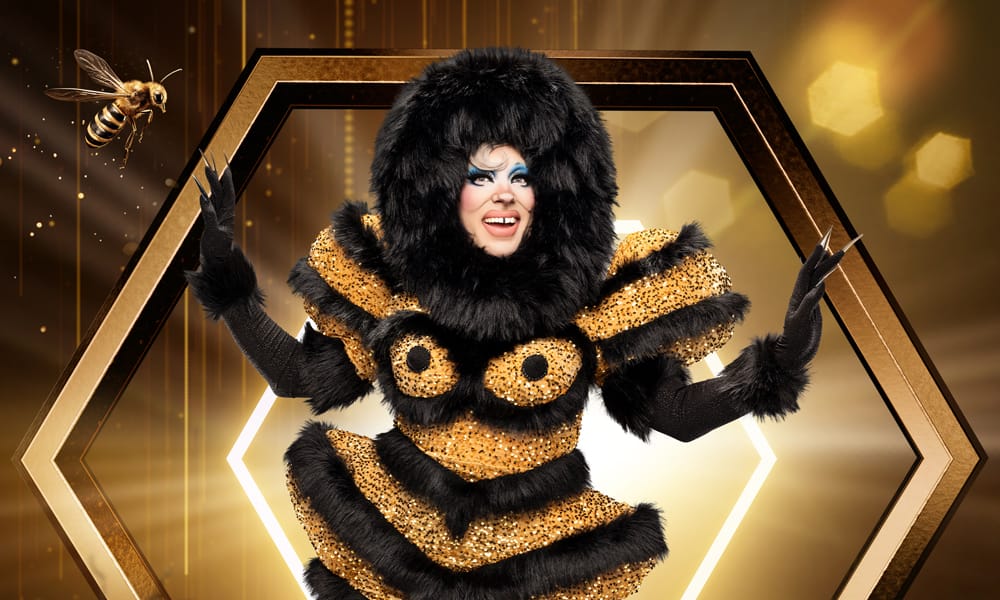In Early August this year, 2023, the capital of the former Hawaiian kingdom of the 1800s and home to Hawaiian chiefs for centuries burned in what the governor of the state of Hawaii called the "worst natural disaster" in the history of Hawaii. It was the most lethal wildfire in the US since 1918, the count of the dead stands at 115 and an unknown number of people are still missing.
Far right conspiracy theorists grabbed onto the burning pain of lost lives and lost history and shared doctored images claiming a space laser was involved. Researchers found that a Chinese government-directed disinformation campaign used the disaster to attempt to sow discord in the US and that residents were discouraged from getting help from government agencies by disinformation aggressively spread by people who regularly used social media to spread Russian propaganda.
I am up in the night coughing again, I lie there for a while and then it’s 5 and I start to write. I’m thinking about ho’oponopono.
I am not feeling well on a scale that unfolds from the pain in my throat and ache in my belly out along vectors of chronic exhaustion from being a parent during climate crisis, during plague years, wildfires coating our throats with smoke, friends unhoused, this sense of being in a world stretched so thin, and the little one is not the only one with nightmares breaking through her sleep.
It is 5am and I am thinking about the violence of colonialism and the hunger for capital and power that breaks minds, chips away at social ties and ecological ties, and ties to ancestors and history, and makes sociopaths. And I’m thinking about the means and uses of ritual, the ways of tying knots one by one to hold on to some kind of hope, some belief in possible futures.
My bed is covered in books about Hawaiian history and spirituality, my mind is a tangle that looks something like the 52 tabs I have open in my web browser on everything from the role invasive grasses imported to aid cattle farming played in the Lahaina fires, to the history of the great mahele that resulted in the loss of common land, the enormous transfer of wealth and identity from native Hawaiians to colonizer corporations, to writing on how white men invented a spiritual system based on European spirituality and claimed it as ancient Hawaiian knowledge called Huna and how it became baked into american witchcraft traditions. I am at the stage in these writing seasons we have conjured for ourselves with the Missing Witches podcast where - in trying to feel along the lines of a story, to feel the tangles and tensions and relationality and politics and power that led me to a person whose story I want to know - I am all tied up.
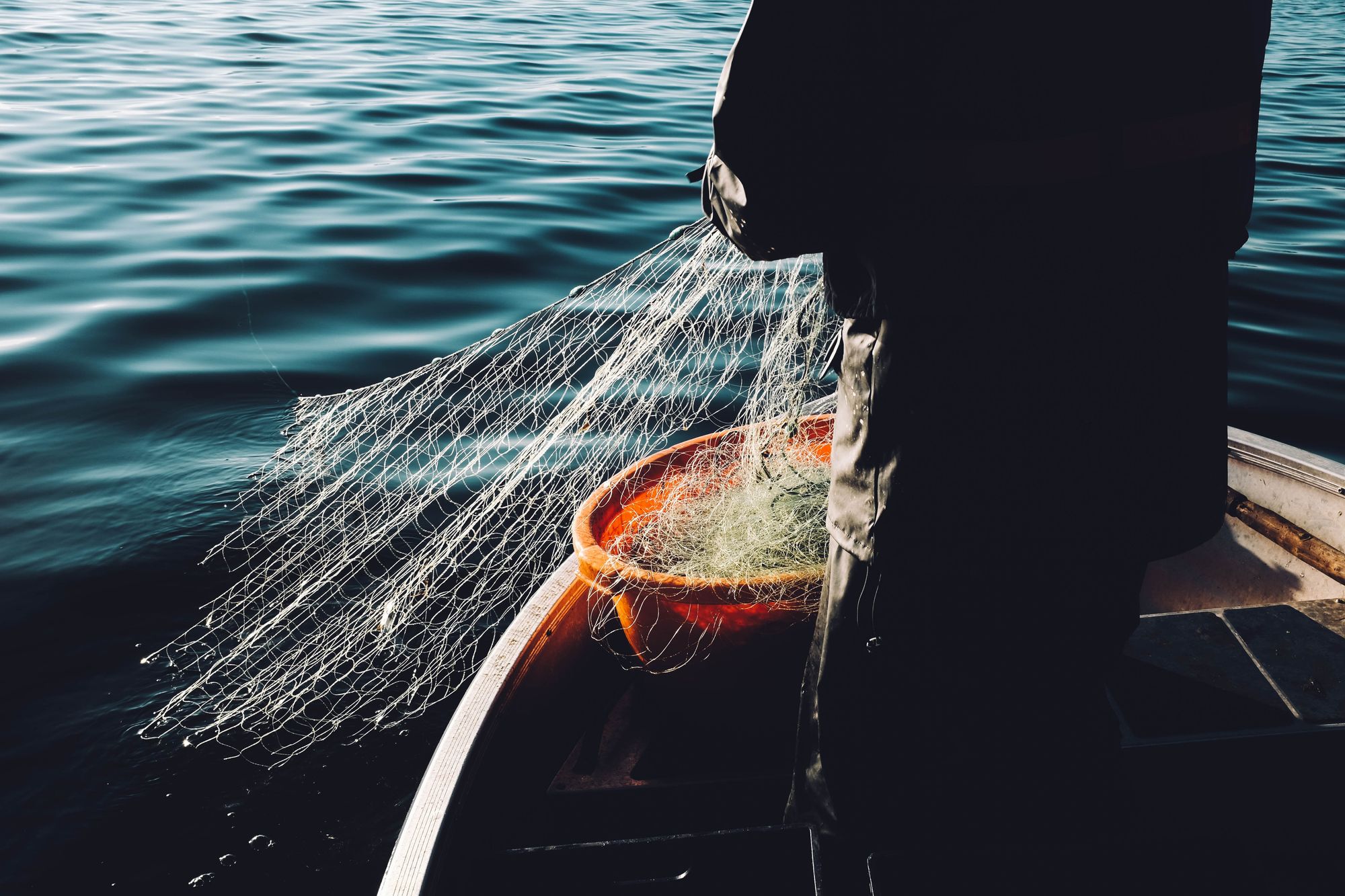
In my fever dream I see a net, and I think this is a story about women, grandmothers, who saw images of fires raging on the horizon, saw the loss of their people behind them in a wall of sorrow, saw their ancient family traditions sold like plastic leis and tiki mugs, and they tried to untangle generations of loss and invasion to find a way knit the past into the future, to knot by careful knot wayfind a kind of health again. I am thinking about ho’oponopono.
You could be forgiven for thinking ho’oponopono is a repetition of phrases that can blast you past your limitations, grant you miracle chakra healing, and help you manifest your divine destiny (and this all in just in the first page of results on amazon books!)
I am sending reverence today to Mary Kawena Pukui, and to Morrnah Simeona. To the gatherers of stories and geneologies and chants and dances, the ways and means of healing in community; those who took what might have felt like the last seeds left on a scorched earth and tossed them as far as they could, planted them into the hearts of colonizer nations in the hope that even as the rampant individualism of self-care obsessed New Age hybridized those seeds, packaged and resold them, even then they might colonize the colonizer, root secrets into rapacious systems, crack them slowly from the inside.
It’s 5am and I am on un-ceded Anishnaabe territory where the leaves are changing, the autumn decay is sad and glorious and everywhere, and I am dreaming post-colonial fever dreams. And I am thinking about ho’oponopono.
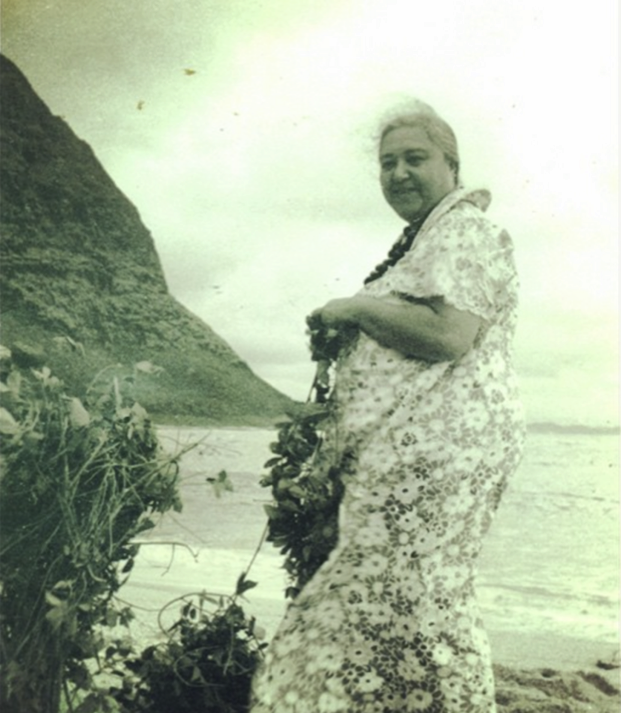
Mary Kawena Pukui born 1895 in K’au Hawaii was the source gatherer, declared a living treasure of traditional Hawaiian culture and spirituality, raised by her grandmother, Naliʻipoʻaimoku, who was a kahuna laʻau lapaʻau (medicinal expert) and kahuna pale keiki (midwife). Kahuna is a reverential term indicating expertise, there were many traditional areas for people to develop their expertise, and all seem to have had at their center: land, ancestors, and community in a way that understood relationships like a careful weaving. Mary’s grandmother was a respected healer and a hula dancer in the court of Queen Emma, who ruled from 1856 to 1863.
Hula was forbidden in public by 1830, as the royal family navigated decades of pressure from missionaries, and continued to privately patronize the hula. By the 1850s, public hula was regulated by a system of licensing. Sacred traditional hula traced its origins back to the creation of the islands, the creation of the world, these were dances from the sacred that were performed bare-chested and accompanied only by chants which held both ancient history and a vibrational power.
Naliʻipoʻaimoku, grandmother, dancer, kahuna, delivered Mary, and asked her parents “for the child to raise in the traditional way, and her request was granted. Kawena was born into the Fire Clan of Kaʻu. Kawena and her grandmother were inseparable, and the child was taught many things she needed to know.”
Mary was also educated in missionary schools and became a teacher of Hawaiian history and culture in those same kinds of schools, at a time when the pressure to forget parts of that culture was enormous. She was from a line of people who remembered ancient stories in their bodies, in dances where the gestures encoded sacred knowledge and jokes too. As a teenager, she began collecting and translated Hawaiian folk tales, proverbs and sayings. She worked at the Bernice P. Bishop Museum from 1938 to 1961 as an ethnological assistant and translator. She taught Hawaiian language and culture to scholars and anthropologists. She published more than 50 scholarly works. Pukui is the co-author of the definitive Hawaiian-English Dictionary, as well as Place Names of Hawaii, and The Echo of Our Song, a translation of old chants and songs. Her book, ʻŌlelo Noʻeau, contains nearly 3,000 examples of Hawaiian proverbs and poetical sayings, translated and annotated. The two-volume set Nānā i ke Kumu, Look to the Source, contains gathered stories about Hawaiian ritual family practices of personal and collective healing.
She wrote the dictionary. She gave things their names and revealed the layers of meaning. She preserved sacred traditions and knowledge as best she could, and one of the practices she rescued was Ho’oponopono.
Ho’oponopono...
survives largely through the efforts and determination of Mary Kawena Pukui… From the mid 1960s through the early 1970s, Pukui had the opportunity to ensure that this part of Hawaiian culture would not die. She collaborated with mental health professionals and social workers at the Queen Lili‘uokalani Children’s Center to codify the cultural practice in systematic terms that could be understood and learned by modern professionals and families. She wanted to ensure that Hawaiian families would once again be able to use ho‘oponopono. (Ho’oponopono Traditional Ways of Healing to make Things Right Again, p12)
What is ho‘oponopono? Pukui offers this example, in Look to the Source, vol 1. p8.
Mrs Pukui has written a hypothetical ho'oponopono to illustrate basic procedures... she combines the opening prayer with statement of the problem.
I have called you, Pukana, you, Heana, and you, Kahana [all children] to come here and look into this problem with me. Your brother, Kipi, is losing the sight of one eye... we want to save the other eye, so that is why we called you together. We will all pray together, and then we'll discuss things.
Oh, Jehovah God, Creator of heaven and earth, and His Son, Jesus Christ, we ask Your help. To our aumākua from the East and from the West, from the North and from the South, from zenith to horizon, from the upper strata and the lower strata, hearken. Come. We want to discuss together and get your guidance and help, so we can know what is wrong with this boy.
Mrs. Pukui then questioned each child. What came to light first was that Kahana was angry with Kipi over some mischievous prank he had played. This brother-sister disharmony was settled promptly, before any further questioning. Kipi admitted his misbehaviour. Then followed the conceptual ritual of kala. This, again geared to the young, went as follows.
Mrs. Pukui: "Kahana, are you willing to kala your brother?"
Kanana: "Yes"
Mrs. Pukui: "Free him entirely of this entanglement of your anger?"
Kahana: "Yes."
Mrs. Pukui: "Remember, Kahana, as you loosen your brother from his trespasses, you loosen yourself, too. As you forgive, you are forgiven. Now, who do you want to forgive you?"
Kanaha: "Please, God forgive me."
Mrs. Pukui: "Yes, we will ask that now. You gods, hear now that Kahana is to free her brother of his trespasses, and to free him from the crown of his head to the soles of his feet, to the four corners of his body. May he be happy later. "And you Kipi, are you willing to kala your sister for being angry with you?"
Kipi: "Yes I am willing."
Nearly identical phrases of kala were addressed to Kipi (the significant use of "free" and "loosen" rather than "forget" is discussed under kala.) Then Kipi was questioned more intensively. The boy confessed to stealing some money. He also owned up to an "Hawaiian offense". He had thrown stones at an 'elepaio, a bird form of a family aumākua. For both he expressed contrition and asked for forgiveness. Then Mrs. Pukui again prayed.
To You, O God, and to Your sacred Son, and all the aumākua everywhere, hearken to this prayer. This boy is sorry for what he has done. I am sorry he has done such things. So, please free him of his trespasses.
Then followed arrangements for restitution. Kipi was to work at small jobs and earn enough to return the money. His sisters agreed to help him. And to make amends with offended aumakua, he was to offer and burn a food sacrifice (mōhai 'ai) of an egg and ti leaf. This symbolized the traditional chicken and pig used in pani (closing) rites. This settled, Mrs. Pukui concluded:
Now we dismiss our ho'oponopono and we pray that all this trouble be taken away and laid away.
O, great eyeball of the sun, please take all this bundle of wrong-doing. Take it out to the West with you. And, as you go down again, to your rest, please take all the faults and trespasses that were committed. Lay all of this in the depth of the sea, never more to come back.
There are several examples of ho’oponopono in Look to the Source, but I love this one, I think because Mary wrote it herself, and bc she did it to show the two worlds together, the way they could be woven and knotted into something beautiful, something syncretic that could pull the past into the present where a new faith had taken hold. She holds onto the reverence for ancestors, and for the sun. She demonstrates a praxis for repair to the web as a whole.
She wrote:
My people believed that the taking of medicine was of little help without first removing any and all mental obstructions. [. . .] When a problem arose in the family affecting an individual or the group as a whole, every member of the immediate family turned to the ho‘oponopono. [. . .] Every one of us searched our hearts for any hard feelings of one against the other and did some thorough mental house cleaning. We forgave and were forgiven, thrashing out every grudge, peeve or sentiment among us. In this way, we became a very closely bound family unit. (Tape H-41G, 7/10/1958 - Ho’oponopono p4)
According to Pukui, … "the burden of the problems needed to be lifted from their minds before their bodies were ready for medical treatment." (ibid)
And listener, witches, weavers, healers and activists, this is why I keep thinking about Ho’oponopono. Because so much new age culture and instagram witchcraft feels stuck in a kind of thinking about self-care and manifesting shit you want, and this makes no sense while the world burns. We need to untangle the histories of our magics and try to tell the truth, if we’re going to survive active, well-funded distortion machines bent on sewing hellfire.
Today, folks in witchy or new age circles are often familiar with a version of ho’oponpono that is summarized in 4 phrases “I am sorry, Please forgive me, I thank you and I love you” and a version of Hawaiian philosophy and spirituality that is sold as Huna, though neither of these are actually indigenous. In Mana for a New Age, Rachel Morgain traces part of this history, focusing on the way the Hawaiian concept of Mana is extracted and becomes a staple of new age and contemporary pagan practices:
'Mana' entered the New Age movement primarily through the spiritual practice known as Huna, the invention of white American teacher and writer Max Freedom Long... The most sympathetic Hawaiian account, from scholar and Living Treasure of Hawai'i Charles Kenn, highlights the limitations of a genuinely Hawaiian influence in Long's work. Kenn was a friend and long-time correspondent of Long, who spent some time as one of his Huna Research Associates (HRA) in Los Angeles in the late 1940s. In 1949, having returned to Hawai'i, he wrote in a letter to a member of the HRA that, 'I have no doubt about Long's sincerity, but he may have introduced some non-huna factors on account of his white-man's mind' (Chai 2022: 109). Ten years later, he wrote to his friend, author and scholar Leinani Melville Jones, that 'Max Long was "auana" [to stray morally or mentally]. I too cannot swallow his "huna" stuff, and I told him so... Max means well but, being a haole... is unable to comprehend the inner meaning of the kahuna philosophy. (quoted in Rodman 1979, 131).
Far from being able to learn of Hawaiian spiritual traditions, which is seems he originally hoped to do, in the end the Huna method that Long developed was a western esoteric system dressed up with a few Hawaiian terms and some scattered stories and imagery, and core concepts such as mana. Chief among these contemporary proponents of Huna is Serge 'Kahili' King, a prolific writer and teacher of Huna in New Age workshops, including in Hawai'i. King is Anglo-American and a former student of Long's who claims to have been adopted into the Hawaiian Kahili family by his Hawaiian teacher, although this has been disputed. He describes Huna as 'the Polynesian philosophy and practice of effective living', demonstrating the way in which the ideas of Huna fit with the broader New Age movement in focusing first and foremost on self-improvement of the individual.
Serge King defines Mana as “all power comes from within” and it’s in this formulation that it enters both modern witchcraft, especially the Feri tradition, as well as new age healing pyramid schemes. Morgrain writes:
By the twenty-first century, these principles were being reproduced in images posted on the Facebook page of the Kalani Retreat Center, which claims to be 'the largest retreat center in Hawai. In the poster for the sixth principle, 'Mana: All power comes from within', the words are superimposed upon an image of a woman holding a yoga pose on a cliff overlooking the ocean. Kalani is a well-loved destination for yoga, wellness, and Hawaiian culture, personal retreats, and volunteer vacations. In 2011, the centre ran a Huna workshop, which was promoted as follows:
'According to the ancient Hawaiian Huna philosophy, all illness is a result of stress. Modern medical research continues to prove this relationship–linking stress to everything from high blood pressure to weight gain. If you know how to relieve tension, the body's healing energy can flow and you can achieve 'instant healing.' This workshop reveals ancient secrets to managing stress as well as the latest information on achieving optimal health.'
Instant healing! Optimal health! All for sale today on a private beach with a convenient downpayment plan! Morgrain continues:
Very different from that of New Age and Pagan conceptions, the mana of Kanaka Maoli healing evokes a collective power mobilised for the purposes of transforming a whole community. While many New Age and Pagan practionners are concerned about the alienating effects of oppressive social structures, rarely would one find the mana of healing spoken of in such expressly social terms.
I want to learn and anchor myself in this recognition of collective power for transforming communities. But also I want to tease out the complications here, because the Huna version of ho’oponopono has a Kanaka Maoli woman at the source too. The story isn’t as simple as white people stealing things and indigenous people being victimized.
Indigenous philosophers, healers, activists and witches know that there have always been weavers, story keepers, transgressors, truth tellers hidden in plain site, disrupting from the inside. An inescapable part of the history of colonization is the creative, trickster resistance of those who would not be colonized. It is in no way my job to teach indigenous histories or philosophies anywhere, I bury myself in these stories because I want to learn about what I’ve been missing, and I know that part of what we’re missing is stories of indigenous women who were and are connected to their source, working their expertise and connected to their power, understood in an identity that sees their craft and will and not just their victimization.
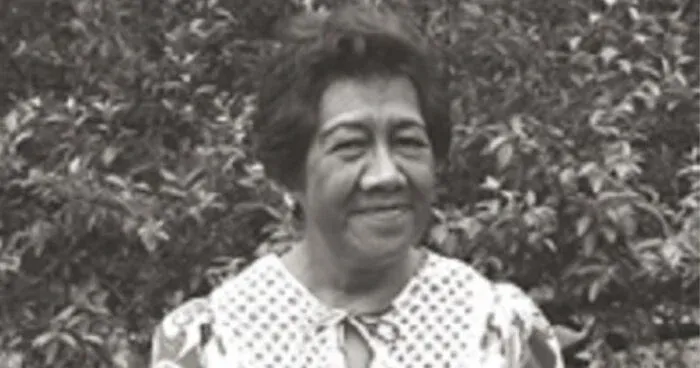
In 1975 Morrnah Simeona, a descendant from two powerful kahunas, a kahuna herself in healing with words, begins to adapt the ho’oponopono, inspired by Christianity and her studies of Indian and Chinese philosophy as well as the channeled works of medium Edgar Cayce. This indigenous wisdom keeper takes white knowledge and uses it to her own ends, I assume because she sincerely believed in the power of her own praxis to untangle.
Morrnah N. Simeona presented the Ho‘oponopono process for the first time at the Huna World Convention in Ponolu‘u, Hawaii in August, 1980. She used her will and her mind and she developed something she wanted to share. It’s not her fault it was taken up by white people who positionned themselves as keepers of ancient hawaiian secrets, which they sell at expensive retreats. It also doesn’t feel correct to erase her from that history, to frame men like Serge King and John Freedom Long as solitary actors when Morrnah was there, trying to do something she believed in.
Serge Kahili King, who authored the book : Instant Healing Mastering the Way of the Hawaiian Shaman, wrote a piece called Ho'oponopono Revealed:
The basic practice designed by Morrnah was simply to express forgiveness for something on behalf of someone else. She used to visit battlefields and forgive all the anger and pain and suffering that happened there, and she would walk down the street and connect with the people who had placed coins in parking meters and ask forgiveness on their behalf. As she herself said, "Clean, erase, erase and find your own Shangri-La. Where? Within yourself. The process is essentially about freedom, complete freedom from the past." Her work is being carried on by Dr. Hew Len, who has emphasized the extension of one's identity to include anything or anyone else who needs healing. He developed the formulistic phrase "I'm sorry. Please forgive me. Thank you. I love you." By repetition of these phrases a person was supposed to connect his or her own light with the light of the Divine Source and, over time, dissolve disharmonious patterns in the subconscious. Today this is probably the most well-known version of ho'oponopono as a healing practice outside of Hawaii.
Both Mary and Morrnah were raised in the heart of the culture, Mary dedicated her life to documenting it and treasuring it, and she makes clear that healing happens in community. Before an illness can be treated, the threads between the hearts and minds and histories of people had to be gently untangled. The truth has to come out, the layers needed to be pulled back.
Morrnah was a master LomiLomi Lapa’au, a master of Hawaiian healing massage. LomiLomi has been called “the connection of the heart, hand, and soul with the source of all life” by Leina’ala K. Brown-Dombrigues. Morrnah studied anatomy as well as the laying on of hands. Morrnah wrote: “Western man has gone to the extremes with his intellectualism, it divides and keeps people separate. Man then becomes a destroyer because he manages and copes, rather than letting the perpetuating force of the Divinity flow through him for right action.
She recognized the depth of disease and pain from which Western civilization needed healing and knew that Ho’oponopono could help. Ho’oponopono means to make right or to rectify an error. The traditional format required the entire family to attend the healing. With a moderator present, each family member had a chance to ask for forgiveness from the others.
Morrnah thought this form of resolution-forgiveness healing could help the people she met when they visited her spas, but she also knew that western communities and families were fragmented… so in In 1976, when Morrnah was 63, she began to develop a new form of Ho’oponopono, modifying the original process. (Amazing Women in History.)
She saw the ways individualism and imperialist white-supremacist capitalist patriarchy had broken and fragmented web, and so she altered a sacred praxis of her people. Who has permission to alter and to export? Who gives such permission and what are the constraints? I don’t know what the right answer is and it's not for me to say, but this permission is granted to some great visionaries who change the praxis and change the world. Or maybe they give it to themselves? Morrnah was one.. Morrnah toured the world lecturing about her adapted version of ho’oponopono and founded the Pacifica seminars to continue the tradition.
And so ho’oponopono becomes a practice that is exportable, lightweight and meme’able and that’s ok I guess as long as we insist upon remembering that it is also rooted in a specific place, history, land, ecosystem, social and cultural context, in interpersonal relations, and in action. In actively making restitution.
Mary’s book Look to the Source continues with this testimony:
Ho'oponpono seems to be a supreme effort at self-help on a responsible, adult level. It also has the spiritual dimension so vital to the Hawaiian people. And even here, prayers, to aumakua in the past or God in the present, are responsible, adult prayers. The appeal is not the child-like, 'Rescue me! Get me out of the scrape.' Rather it is, 'Please provide the spiritual strength we need to work out this problem. Help us to help ourselves.'
This is the kind of magic I am looking for, what I want is a craft that draws in community, family, politics, and also goes all the way into the body and into the web of the world. I want all the social determinants of health accounted for in conversations about healing including climate crisis, poverty wages, AND the love and messages from my ten thousand ancestors, bc moving energy from the stars into my bones and asking for forgiveness from my energy and yours will not be enough, we need fucking health care too, and we need to listen to each others stories of violation and we need to make restitution. A connection with land established by me talking to the trees in my neighbourhood will not be enough without the truth-telling and reparations that will put the land and the people back into a net of right relations. Witnessing the wisdom in the waves isn’t enough when access to the beach is privatized.
Here at Missing Witches we are driven by longing for missing threads, missing knowledge, missing context. I think a lot about what has been lost in translation.
As Malcolm Nāea Chun points out in their book Ho'oponopono: Traditional Ways of Healing to Make Things Right Again, an article entitled “Te Tala” by Zephyrin Kahoāli‘i Kepelino is distorted by the translators rendering te tala as “counter-sorcery,” but te tala literally means “to forgive,” and inserting this into the translation opens up questions about how magic and craft got distorted and buried by missionary thinking:
Forgiveness (te Tala) is something associated with all the priests involved with sorcery. The skilled guardian of sorcery was able to counter (te tana ‘ana) the sorcery of other. This was the true priest and one who was not able to do so was unskilled (holona).
So I have to ask, if forgiveness is counter-sorcery, then how should sorcery have been translated in the first place? Some of the kahuna’s expert knowledge was called sorcery and they were said to have power over death.
Traditional ho’ponopono would be led by a member of the family who was trusted, who knew both sides, or by a kahuna, sorcerer, healer, adept in calling forth the truth.
A sorcerer, a witch, finds the truth, follows the threads into human hearts and social relations and into the painful facts of injustice. They help find words and rituals and practical action that will help that truth find the peace it needs before it festers and brings death. In a colonial context where the truth was that 90% of the people who had lived on the islands had died following contact with the white men, that the land had been transferred away from the those who were left into the hands of white american businessmen, that the people lived often in great poverty while tourists partied, it’s not surprising that a ritual and knowledge keeper dedicated to telling the social and spiritual context of disease would mocked, feared, and labeled as sorcery.
For when Christianity came in, more than a century ago, ho'oponopono went out. Because ho'oponopono prayers and rituals were addressed to "pagan gods," the akua and aumākua, the total ho'oponopono was labeled "pagan." Many Hawaiians came to believe their time-honored method of family therapy was "a stupid, heathen thing." Some practiced ho'oponopono but only bits and pieces of it. Or grafted-on innovations. Or mutations. Or complete distortions of concept, procedure and vocabulary.
Fortune-telling was called ho'oponopono. So were unintelligible rituals. "This lady prayed over me–I think in Portuguese." "The kahuna prayed in Hawaiian, so low I didn't know what he was saying." "I went to this man and he chanted something." "A self-styled "kahuna" offered to kill by sorcery (evidently ho'opiopi'o) and this was called ho'oponopono.
The Mormon Family Circle, and any family discussion were termed ho'oponopono.
Many Hawaiians called family prayers (pule 'ohana) ho'oponopono.
One client said ho'oponopono was "fasting and praying three days;" another said it meant "blessing the house" and casting out demons," others said it meant "reading the Bible" and "forgiving each other."
Mary was dedicated to finding the stories, words, and oral histories of rituals that would connect her people to their wisdom at a time when it was slipping away.
Since Mary was a gatherer of the meanings of words, here is a definition of terms in ho’oponopono, offered as a map to the stages in the process of the ritual (ibid p. 24):
hihia—entangled or entanglement; snarl or snarled; enmeshed.
kukulu kumuhana—the pooling of strengths—emotional, psychological, and spiritual, for a shared purpose. Group dynamics characterized by spiritual elements and directed to a positive goal. A unified, unifying force. In broad context, a group, national, or worldwide spiritual force, constructive and helpful in manner. In ho‘oponopono, the uniting of family members in a spiritual force to help an ill or troubled member.
mahiki—to peel off; to pry; as to peel the bark of a tree to judge the wood beneath; to scrape at the skin to remove a tiny insect burrowed beneath the epidermis. Also, to cast out, as of a spirit.
ho‘omalu—to shelter, protect, make peace, keep quiet, control, suspend. A period of peace and quiet. Silent period.
mihi—repentance, confession, apology; to repent, confess, apologize.
kala—to release, untie, unbind, let go.
Witches, it’s 5am and dawn is a long ways off. Here in the dark, in the coven we make between our ears, let’s light a candle for Mary and for Morrnah too and in their honour let’s reach out to tell true histories and to make reparations. To reach into ourselves for forgiveness and to reach for eachother in defiance of the clone armies of dictators who desperately want us at war, let us turn our magic to the vision of the fishing net, tied knot by sturdy truthful knot, that unified and unifying force that refuses to give up on each other, and insists on making shelter for the magic in the world.

